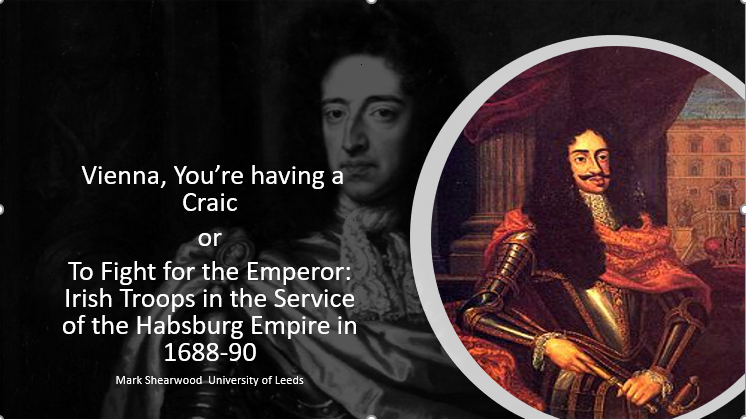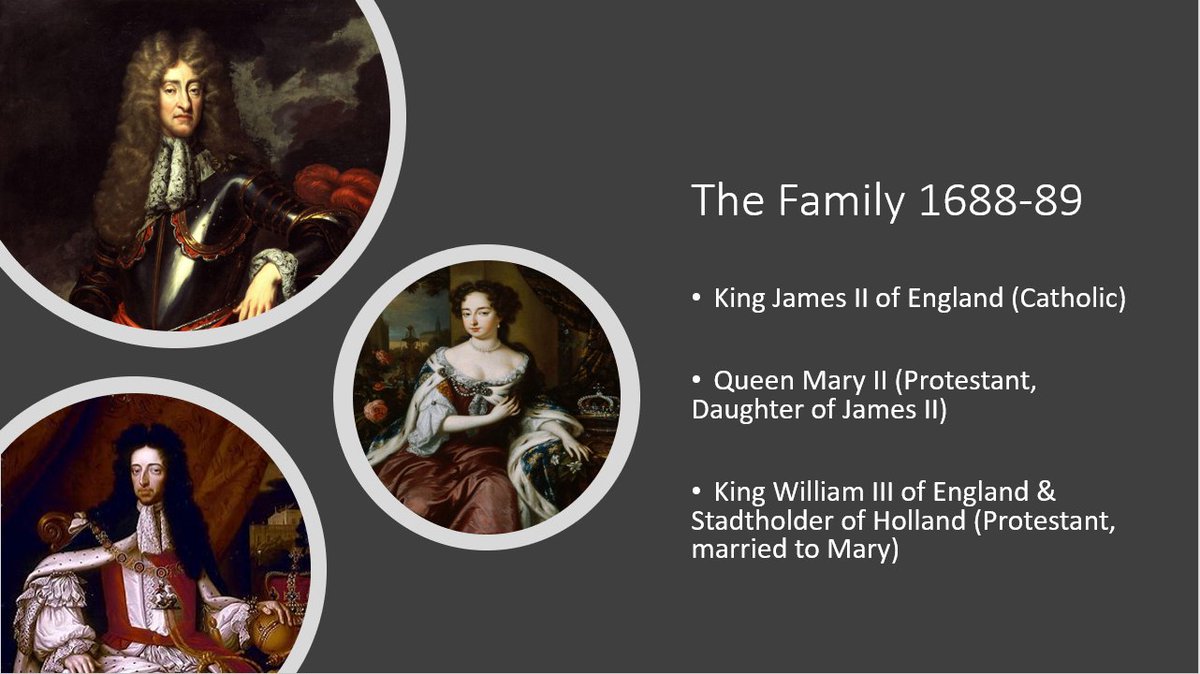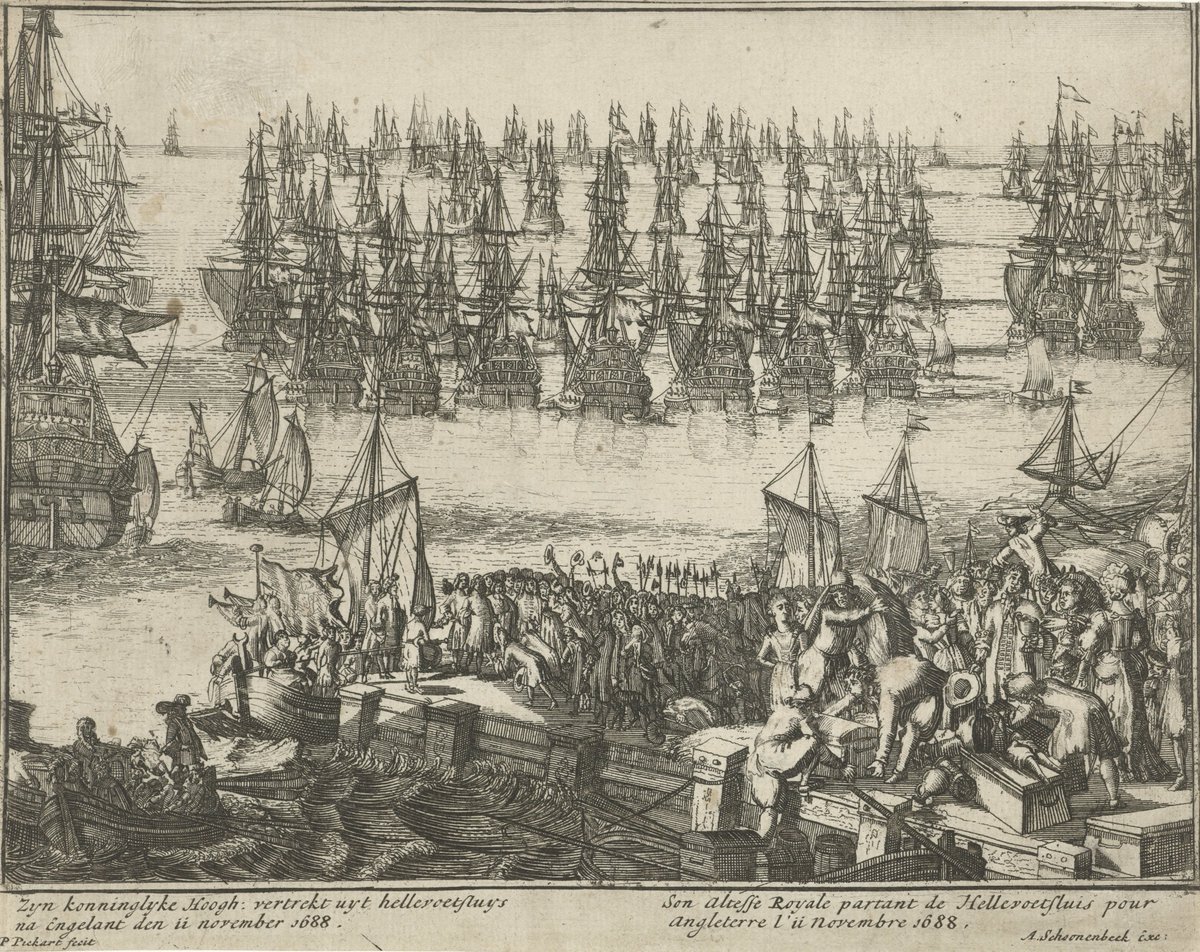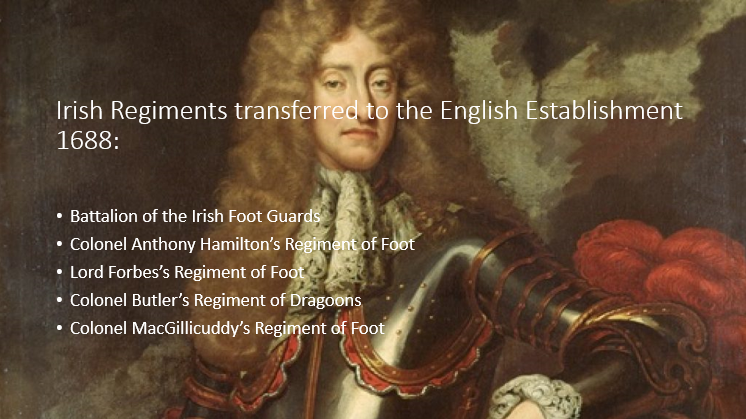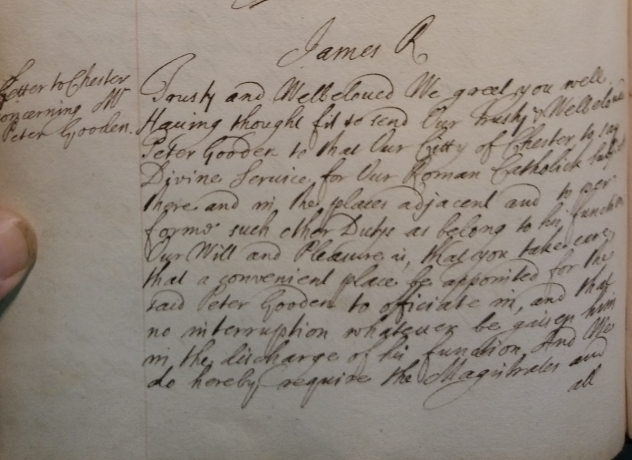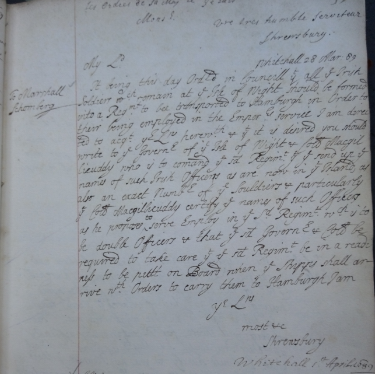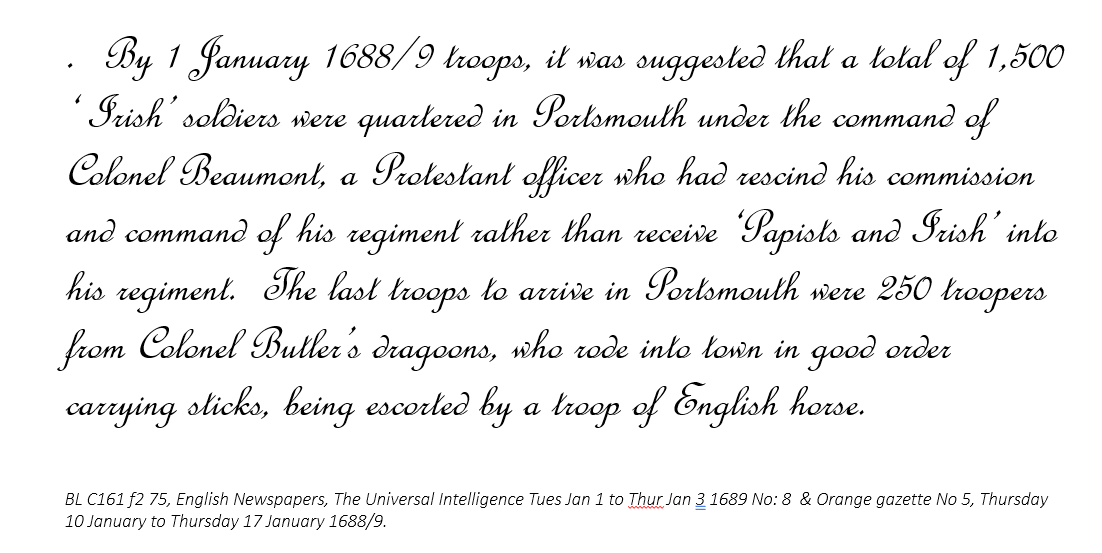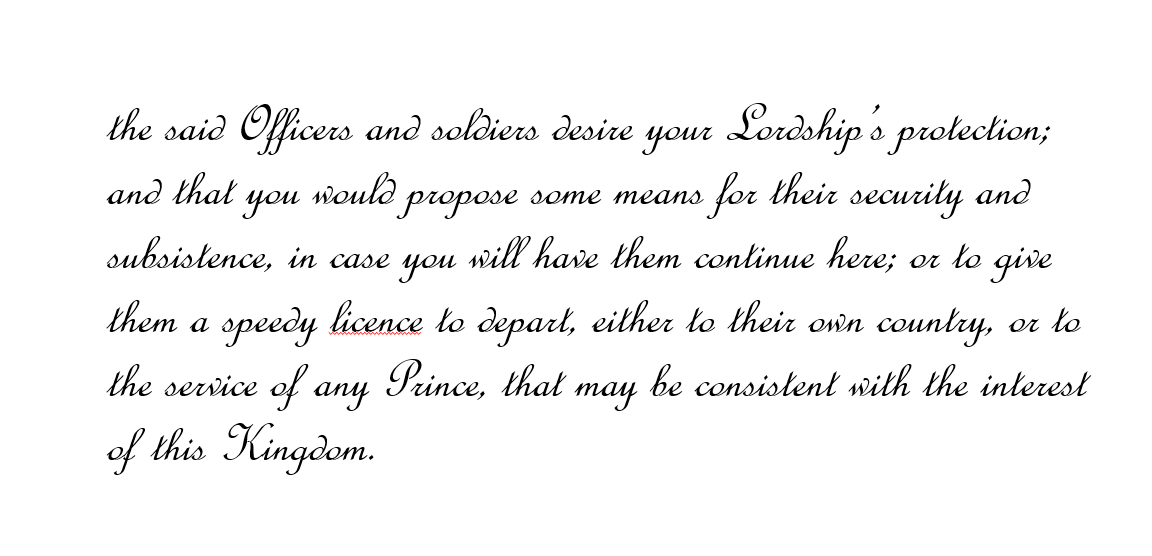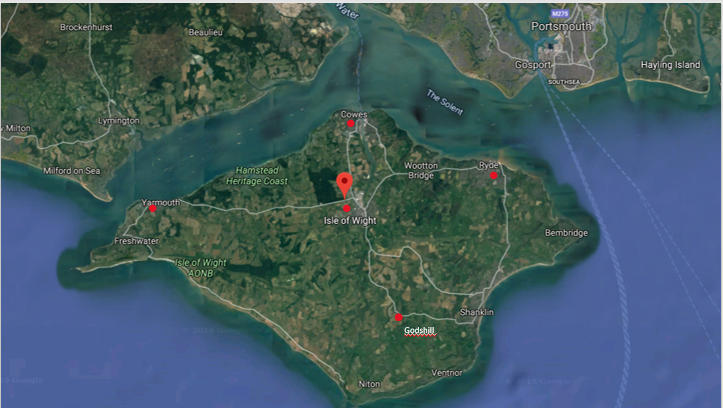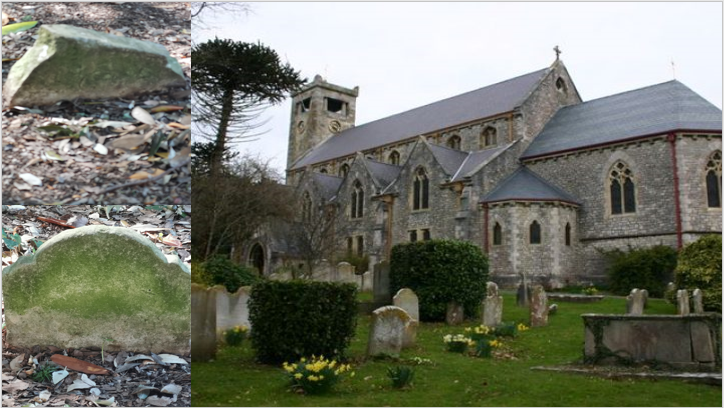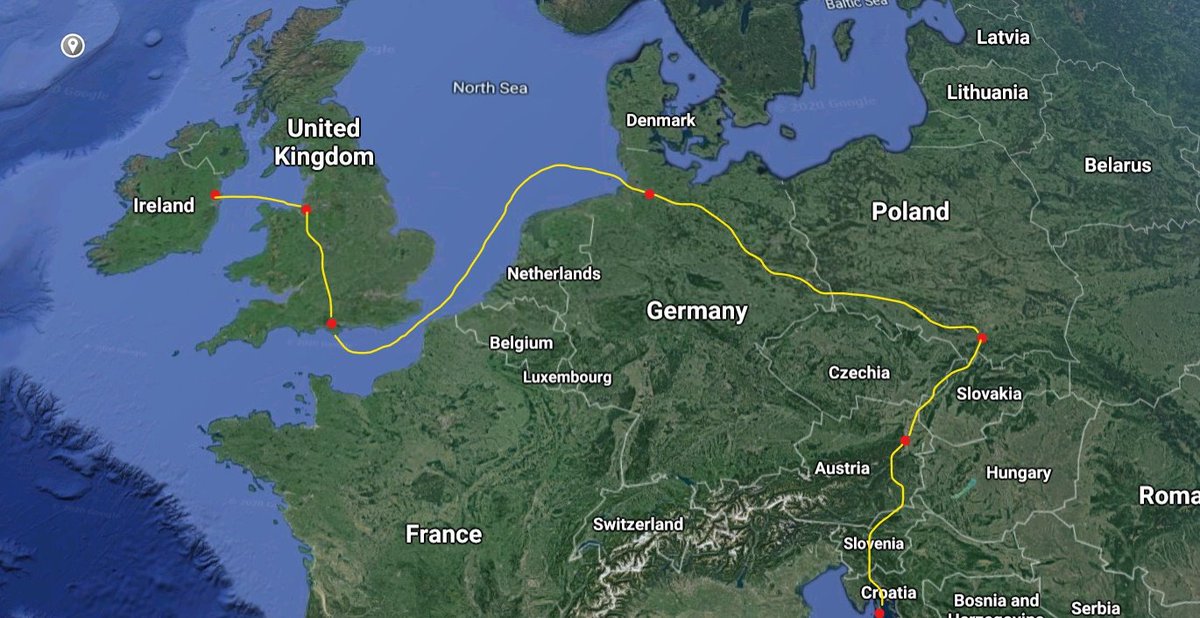To Fight for the Emperor: Irish Troops in the Service of the Habsburg Empire
This paper explores the identity and fate of Irish regiments transferred onto the English Establishment (payroll) by James II during the Summer of 1688 prior to the Glorious Revolution. #EMQuon 1/16
This paper explores the identity and fate of Irish regiments transferred onto the English Establishment (payroll) by James II during the Summer of 1688 prior to the Glorious Revolution. #EMQuon 1/16
The story of these troops has been overlooked in current historiography and where it is recorded their identity, loyalty and religion have been based on 17th century prejudice. This paper intends to return agency to these soldiers #EMQuon 2/16
Housekeeping: First a Health Warning, terms such a ‘Irish’ and ‘Catholic’ were in the late seventeenth-century interchangeable and were used as discriminatory and derogatory terms, as was the more obvious term of ‘Papist’. #EMQuon 3/16
The Glorious Revolution of 1688 replaced the Catholic King James with William of Orange and James’s daughter Mary, and is generally attributed to the birth of James’s son on 10 June 1688 giving rise to the possibility of a Catholic dynasty #EMQuon 4/16
In September 1688 James II brought over five ‘Irish’ regiments to bolster the English army with a paper strength of 2,400 soldiers plus officers, supposedly all Catholic, following reforms in 1686/7, these assumptions have never previously been fully investigated. #EMQuon 5/16
The first misconception is that all these troops were ‘Irish’, on arrival in Chester, regiments was found to be grossly understrength and recruited in Cheshire and Lancashire, both with large Catholic communities. Lord Forbes regiment recruited over 300 Englishmen #EMQuon 6/16
Following William’s Invasion, an Irish regiment garrisoning Reading engaged in a skirmish with William’s advance forces on 8 December 1688 resulting in 29 ‘Irish’ fatalities. One of the few open engagements. The English garrison refused to engage William’s forces. #EMQuon 7/16
The 2nd misconception is that all the soldiers were Catholic, between the 7 and 10 December six Protestant officers from the Irish foot guards gave up their commissions, the regiment was later found to contain over 150 Protestant soldiers on its arrival at Portsmouth #EMQuon 8/16
The next misconception is regarding loyalty, following the disbanding of the English army (11 Dec 1688) the Officers and men of Lord Forbes regiment pledged their loyalty to the Kingdom showing concepts of martial discipline loyalty to the state. #EMQuon 9/16
William viewed these troops as soldiers in his service (with questionable loyalties) and instructed that they were to be paid. He ordered the regiments to Portsmouth to be ‘interned’ on the Isle of Wight. Protestant troops are replaced with English Catholics. #EMQuon 10/16
William arranges to sell 2,000 troop to the Emperor Leopold I of the Habsburg Empire for service against the Ottoman Empire, to be transported via Hamburg. The troops billeted in tents with camp beds,outside Newport, not secured within Carisbrooke Castle as assumed. #EMQuon 11/16
They were formed into one regiment under the command of Colonel MacGillicuddy. Only 1,500 were send due to escapes, marriages, and disease. Thomas Jules married Mary Hobbs at St Mary’s Church, Cowes where graves of two Irish officers were located others in Godshill. #EMQuon 12/16
Half of the regiment left on the ships ‘Cambridge’ and ‘Speedwell’ on the 24 April 1689, with almost 1,000 soldiers left on the island due to transport issues and the [Small] pox. The last arriving in Hamburg on 1 June 1689 without MacGillicuddy who had escaped. #EMQuon 13/16
It now appears that the 450 troops first reported and used as a basis for stating that most had deserted, were only the first to arrive. The troops were placed under the command of Count Taaffe, of Irish descent. destined for Dubrovnik but ended up in Hungary #EMQuon 14/16
100 troops deserted through Germany, with reports of Irish soldiers arriving in Rotterdam in July 1689. Taaffe wrote to the Emperor that September that an unspecified number of ‘Irish’ had deserted stating that 930 soldiers are still in the Emperors service #EMQuon 15/16
Thank you, Archives used Kriegsarchiv Vienna @Staatsarchiv, Newport Records Office, @UkNatArchies, and @britishlibrary. My thanks to @ CatholicRS Catholic Record Society for David Rogers Research Fund Grant, the grant from @societyarmy and #EMQuon & @LeedsUniHistory 16/16

 Read on Twitter
Read on Twitter